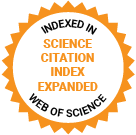Journal of Medical Internet Research
The leading peer-reviewed journal for digital medicine and health and health care in the internet age.
Editor-in-Chief:
Gunther Eysenbach, MD, MPH, FACMI, Founding Editor and Publisher; Adjunct Professor, School of Health Information Science, University of Victoria, Canada
Impact Factor 5.8 CiteScore 14.4
Recent Articles

Among 5.4 million people receiving treatment for asthma in the United Kingdom, more than 2 million experience suboptimal control, leading to the use of health care services and resulting costs as well as poorer quality of life. Online health communities (OHCs) are increasingly used as a source of lay health advice, providing opportunities for learning and mutual support and complementing information from “official” health sources. While engagement with OHCs has the potential to improve self-management, concerns remain about the reliability and usefulness of the information posted. Professional moderation of such communities is essential for supporting sensitive patients, ensuring adherence to forum guidelines, and maintaining clinical safety.

Self-monitoring of dietary behaviors is typically a central component of behavioral weight loss programs, and it is widely recognized for its effectiveness in promoting healthy behavior changes and improving health outcomes. However, understanding the adherence dynamics of self-monitoring of dietary behaviors remains a challenge.


Motivational interviewing (MI) is frequently used to facilitate behavior change. The use of change talk during motivational interviews can predict subsequent behavior change. However, no studies have compared the information obtained from traditional face-to-face motivational interviews and computer-mediated motivational interviews or resulted in the same amount of behavior change.

Individuals with mental disorders frequently use YouTube to express themselves, reach an audience, or as a means of understanding their condition. Testimonies posted on YouTube provide longer and richer perspectives than the short posts found on other social media platforms. Research focusing on the depiction of mental disorders on YouTube is blossoming. Bipolar disorders (BDs) are disabling mood disorders. The diagnosis of any mental disorder, and more so BD, is often a life-changing event. However, no published study has investigated the portrayal of diagnoses of BD on YouTube.

Recent years have seen an immense surge in the creation and use of chatbots as social and mental health companions. Aiming to provide empathic responses in support of the delivery of personalized support, these tools are often presented as offering immense potential. However, it is also essential that we understand the risks of their deployment, including their potential adverse impacts on the mental health of users, including those most at risk.

Osteoarthritis (OA) is a chronic degenerative bone and joint disease that significantly impacts patients’ quality of life and mental health, while also imposing a substantial economic burden on society. However, access to rehabilitation for patients with OA is challenging upon hospital discharge. Digital exercise therapy represents a promising telemedicine strategy for enhancing the management of OA, but its effect on OA is not yet clear.

Discontinuation of buprenorphine as a medication for opioid use disorder (MOUD) necessitates careful tapering to reduce opioid withdrawal and relapse. With a half-life of 43-60 days, buprenorphine extended-release formulation (BUP-XR) may provide gradual taper, facilitating successful treatment discontinuation.

Structured reporting is essential for improving the clarity and accuracy of radiological information. Despite its benefits, the European Society of Radiology notes that it is not widely adopted. For example, while structured reporting frameworks such as the Breast Imaging Reporting and Data System provide standardized terminology and classification for mammography findings, radiology reports still mostly comprise free-text sections. This variability complicates the systematic extraction of key clinical data. Moreover, manual structuring of reports is time-consuming and prone to inconsistencies. Recent advancements in large language models have shown promise for clinical information extraction by enabling models to understand contextual nuances in medical text. However, challenges such as domain adaptation, privacy concerns, and generalizability remain. To address these limitations, frame semantics offers an approach to information extraction grounded in computational linguistics, allowing a structured representation of clinically relevant concepts.

Musculoskeletal (MSK) conditions are prevalent and increasing in Western-style economies, associated with an aging population and reduced physical activity levels. Prevention, early detection, and treatment can enable people to live in good health, remain independent and socially connected, and have economic advantages for society, such as reducing pressure on health and social care services. Triaging patients safely and effectively to the right care, for the first time improves outcomes and reduces costs, with digital solutions offering potential advantages over traditional methods.

Telehealth visits are remote health care consultations conducted using digital technologies, such as video calls, phone calls, or web-based platforms. This type of service offers numerous benefits for both health care users and health care providers. Users save time and money by avoiding traveling to health care facilities. At the same time, health care providers can expand access to care for users in remote areas and enhance the continuity of care. These advantages are even more evident in pediatric settings, where attending in-person services must align with the commitments of the patient (eg, school activities) and the caregiver. Although the potential benefits of telehealth visits for users and health care providers were already known before the COVID-19 pandemic, its widespread adoption only occurred during it. Having experienced its benefits, hospitals are now, in the postpandemic phase, determined to maintain and strengthen their remote service offerings. It has, therefore, become crucial for them to understand the factors influencing users’ intention to continue using telehealth visits (or “continuance intention”), even now after the access restrictions to health care facilities imposed during the COVID-19 pandemic have been lifted. However, the literature lacks comprehensive, valid, and reliable models explaining users’ continuance intention toward telehealth visit services.
Preprints Open for Peer-Review
Open Peer Review Period:
-

















